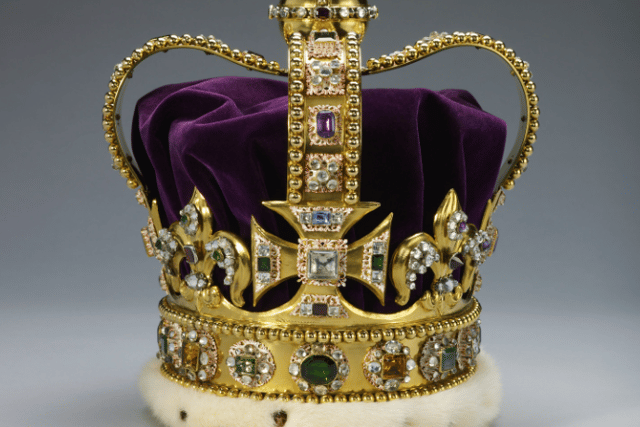King Charles Coronation: Regalia including orbs, swords and sceptres announced - here’s what they represent
and live on Freeview channel 276
King Charles III’s much anticipated coronation will be the first of its kind in almost 70 years. The finer details of the landmark event continue to be released by the Royal Family with the latest news revealing the symbolic items which will feature during the crowning.
Royal events are well known for their pomp and circumstance, and the coronation will be no different. Various pieces of regalia will be used throughout the ceremony, each with
their own back story.
Advertisement
Hide AdAdvertisement
Hide AdWith full details announced, here’s what we know about the items which will be used during the coronation. This includes the crowns and sceptres you will see worn and held by King Charles III and the Queen Consort.
The Coronation Regalia
The regalia consists of two maces, made of silver gilt over oak, dated between 1660 and 1695 and are the ceremonial emblems of authority which are carried before the Sovereign at events such as the State Opening of Parliament. Also carried before the Sovereign on formal occasions is the Sword of State, symbolising Royal authority; a steel blade with a silver-gilt hilt, enclosed in a wooden scabbard which is covered in velvet.
In 1660 and 1678, during the reign of King Charles II, two such swords were made, the elder of which has not survived. The remaining sword has been used at several Coronations and, in 1969, the Investiture of The Prince of Wales. The sword is carried with the point upwards, and the scabbard carries the coat of arms of King William III.
Other Coronation swords
As well as the sword of state, three other swords will be used during the coronation ceremony. These are the Sword of Temporal Justice, signifying the Monarch’s role as head of the Armed Forces, the Sword of Spiritual Justice, signifying the Monarch as Defender of the Faith, and the Sword of Mercy or Curtana, which has a blunted tip, symbolising the Sovereign’s mercy.
Advertisement
Hide AdAdvertisement
Hide AdThe swords were first used at the Coronation of King Charles I in 1626, and the steel blades date back to the sixteenth century, with early seventeenth century gilt-iron hilts, and wire-bound grips. The three swords are carried without their scabbards, with their points up.
The Sovereign Orb and Ring
The orb symbolises the Christian world. It was created in the 17th century and is divided into three sections with bands of jewels, for each of the three continents known in the mediaeval period.
The Sovereign’s Ring is composed of a sapphire with a ruby cross set in diamonds. A symbol of kingly dignity, the ring was made for the Coronation of King William IV in 1831 and has been used in each coronation since that of King Edward VII.
Sovereign Sceptre’s
There are two sovereign sceptres, and both will be used during the coronation ceremony. The Sovereign’s Sceptre with Cross represents the sovereign’s temporal power and is associated with good governance. It comprises a gold rod, surmounted by an enamelled heart-shaped structure which holds the Cullinan I diamond. The sceptre was created for King Charles II, and the Cullinan I was added in 1901.
Advertisement
Hide AdAdvertisement
Hide AdThe Sovereign’s Sceptre with Dove, traditionally known as ‘the Rod of Equity and Mercy’, represents the Sovereign’s spiritual role, with the enamelled dove with outspread wings representing the Holy Ghost. It was created by the Crown Jeweller, Robert Vyner in 1661.
The Crowns


Multiple crowns will be used during the coronation, and each date back decades with plenty of tradition and symbolism. St Edward’s Crown will be used to crown His Majesty The King at Westminster Abbey - this is a tradition which dates back centuries.
The crown was made for King Charles II in 1661, as a replacement for the mediaeval crown which had been melted down in 1649. The original was thought to date back to the eleventh-century royal saint, Edward the Confessor – the last AngloSaxon king of England. The crown was commissioned from the Crown Jeweller, Robert Vyner, in 1661.
Although it is not an exact replica of the mediaeval design, it follows the original in having four crosses-pattée and four fleurs-de-lis, and two arches. The crown is topped with an orb and a cross, symbolising the Christian world, and is made up of a solid gold frame set with rubies, amethysts, sapphires, garnet, topazes and tourmalines.
Advertisement
Hide AdAdvertisement
Hide AdFollowing the end of the ceremony, King Charles will exchange St Edward’s crown for The Imperial State Crown, or Crown of State. The term “imperial state crown” dates back to the fifteenth century when English monarchs chose a crown design closed by arches to demonstrate that England was not subject to any other earthly power. This Imperial State Crown was made for the Coronation of King George VI in 1937, but is closely based on a crown designed for Queen Victoria in 1838 by the Crown Jewellers of the time, Rundell, Bridge & Rundell.
Camilla Queen Consort has selected Queen Mary’s Crown for use in the coronation. The design was inspired by Queen Alexandra’s Crown of 1902. Like Queen Alexandra’s Crown, it can be worn without the arches in the form of a circlet, which Queen Mary wore for the Coronation of her son, King George VI, in 1937.
Comment Guidelines
National World encourages reader discussion on our stories. User feedback, insights and back-and-forth exchanges add a rich layer of context to reporting. Please review our Community Guidelines before commenting.
